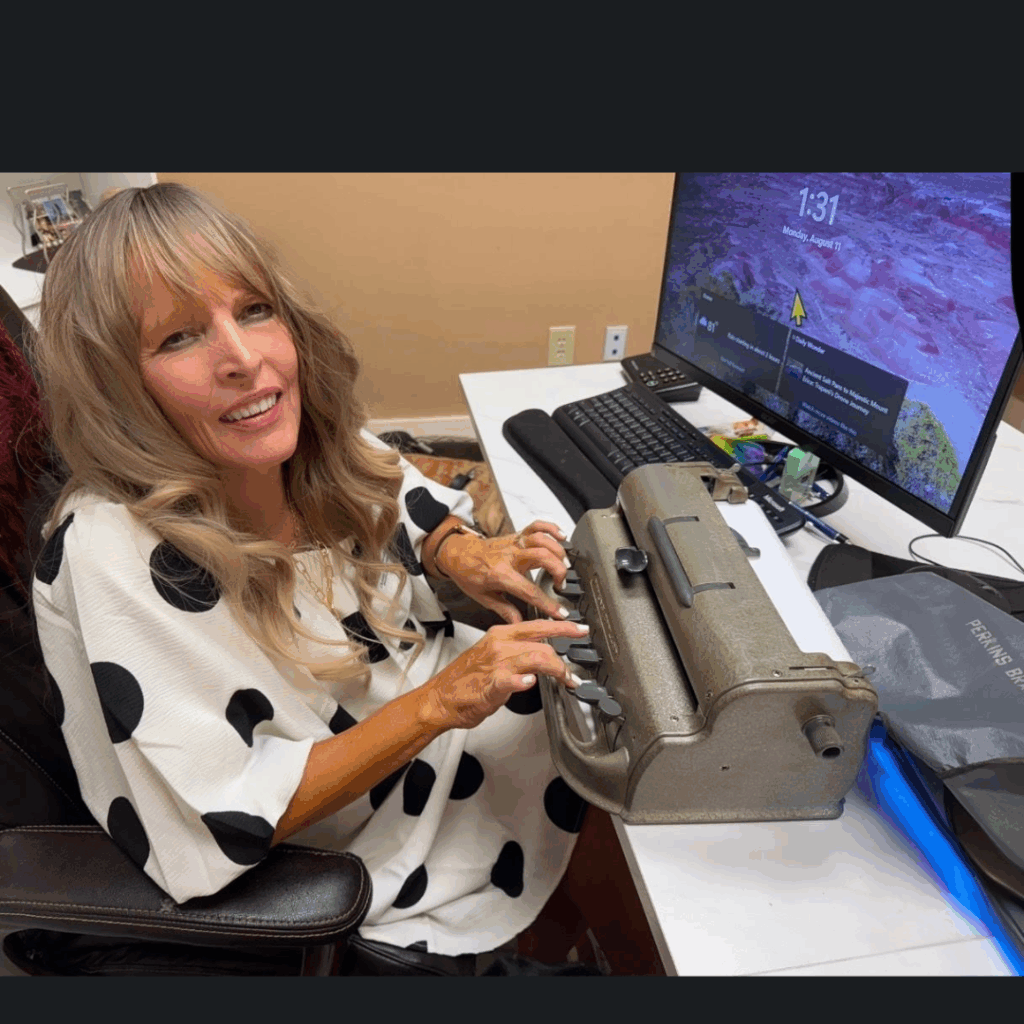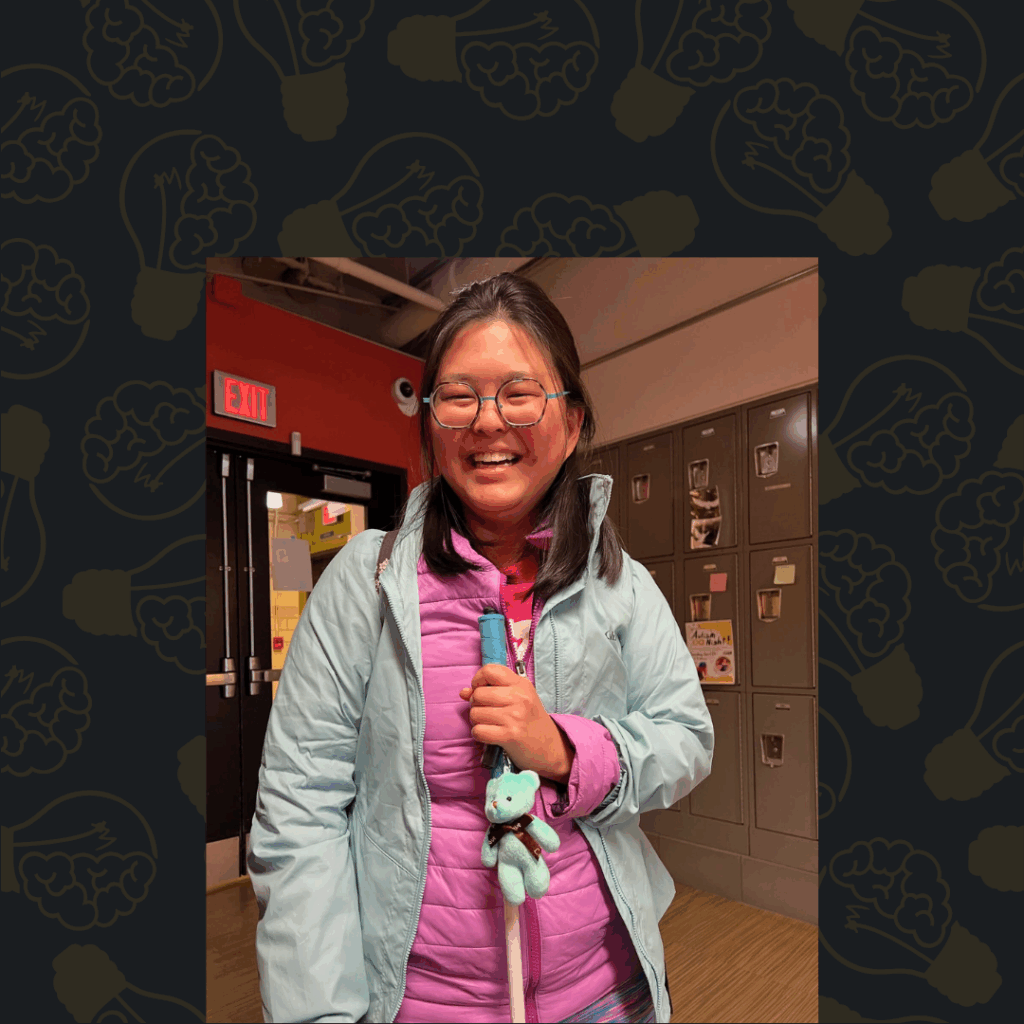July is Disability Pride Month – a time to celebrate disabled people, their accomplishments and contributions to society.
As someone who has been blind since birth, the disability pride narrative has allowed me to not only accept my disability, but to gain access to opportunities that wouldn’t have existed if I was non-disabled or viewed my disability as a burden.
Here are just a few examples of how I’ve found disability pride and embraced my blindness.
Finding my place in the world, starting at Perkins
The Outreach programs at Perkins were a major catalyst toward gaining a positive outlook on my blindness.
I began attending at just six years old – and walked away from my first program with some of my first blind friends.
The connections I made were with some of the only people in my life who really understood what it was like to not see well. Over the years, we have bonded over a lot of things – but our conversations about shared challenges like accessibility issues, microagressions, and navigating public transportation have been especially meaningful, allowing me to feel seen with issues that even my parents could never fully understand.
When I transferred to a private school in seventh grade – where I was the only blind student to ever attend the school and had to work especially hard to advocate for my needs – my connections at Outreach became even more important. They gave me strength in navigating situations that most blind high school students don’t have to deal with as much.
Even now, despite not having attended an Outreach program since 2020, these connections remain some of my closest friends.
Disability pride: powering advocacy and accomplishments
In fifth grade, I began to educate other students at my school about disability awareness. I partnered with Understanding Our Differences, a disability education program in my town, to deliver a presentation on blindness to my classmates.
I started speaking at other disability-related events as well, including a black-tie gala in Boston that was attended by nearly 400 people. These speaking engagements allowed me to share my lived experiences as a blind person with a larger audience, and show what’s possible with my disability – in contrast to the pitying narrative that is often shown in the media or in everyday interactions.

These experiences eventually led to an invitation to go to Washington DC ahead of my freshman year of high school for my first lobbying event.
The Better Care Reconciliation Act was proposed to reduce Medicaid funding, which would have negatively impacted disabled people’s access to healthcare. My goal was to share my experience with Medicaid to local senators in hopes that my story could potentially help sway the vote. My lobbying was particularly important as the measure had passed the House a month prior – and just two weeks after I left Capitol Hill, the BCRA was defeated by the Senate.
With this experience, I transcended beyond just showing pride in my disability to my peers – I was ready to leverage the pride I held in my identity to influence issues greater than myself.
Navigating college and career opportunities
As I entered college, I had many other opportunities to develop pride in my identity.
As a freshman, I joined my college’s chapter of DREAM (Disability Rights, Education, Activism and Mentorship), which gave me an opportunity to become a leader in developing a disabled community identity on my campus. I quickly took a leadership role, running the chapter’s social media and coordinating chapter events.
I also started attending meetings for the Massachusetts chapter of the National Federation of the Blind, which I continue to be involved with to this day. My involvement with the NFB has included helping run their social media, being a notetaker and event planner for their student division, serving on a committee for a regional student seminar, and attending annual conventions.
As part of NFB, I was able to easily connect with older blind adults for the first time, which gave me a completely new perspective on blindness. While I never formally attended an NFB program, I have attended the National NFB Convention, where I was immersed in all aspects of the Federation for a week and connected with blind people from across the country. Attending this convention and learning from the many discussions and presentations there made me appreciate the blind community even more.
While at the Convention, I learned about the TAD Foundation, a nonprofit that helps to reduce the unemployment rate for blind and low vision college students looking to enter the workforce. The program provides mentorship and networking opportunities with blind and sighted professionals in students’ fields of interest, training for companies on how to assist with hiring and accommodating blind employees, weekend seminars in New York City to connect with other program participants, and virtual events where students can discuss their experiences with internships, college, or anything else they need guidance with.
This program has provided me and other students with the skills we need to break through the high unemployment rate that blind people currently face – and as with most other blindness programs I’ve done, has provided much-needed social connections with other blind students.
Overall, the programs and opportunities that I’ve had as a disabled person have played a big role in allowing me to feel proud of my disabled identity.

About the author
Tom Geraci is currently a Marketing intern at Perkins School for the Blind. He recently graduated with a Bachelor’s degree in Communication and Media Studies from Merrimack College and will be returning to Merrimack in the fall to pursue his Master of Arts. He has spent his time in college growing his connections academically, socially and professionally.
Outside of work and school, Tom is an avid foodie, a DJ for on-campus events, and a member of several campus clubs and organizations. He is passionate about disability rights activism, and hopes to continue to advocate for disabled folks in community organizations in his post-college life.
You can connect with him on Instagram.
If you’d like to read more from Tom, check out his previous #MyBlindStory post, From High School to College: New Surroundings, New People (Same Old Vision).



